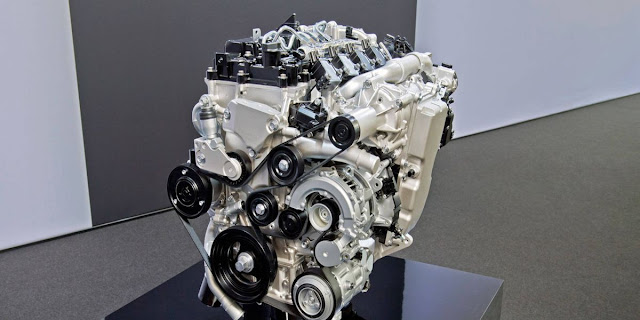What is Compression in Cars? Here's the Ratio List!
Compression literally means compression. In the compression process of course raises pressure. Therefore, in the automotive world, compression is the compression of fuel in a vehicle's engine cylinder which creates pressure that causes the fuel to be sprayed and captured by the spark plug.
Compression in cars is usually measured with a compression gauge. With this tool you can find out how much pressure is in your vehicle's engine cylinder. If the pressure is appropriate, it means your car is in good condition. However, if you find that the pressure is lacking, your car is usually underpowered when driven. Then you should start looking for the cause.
What is the difference between Compression and Compression Ratio?
Some people think that compression is the same as compression ratio. The units of compression are bar, Psi, kg/cm2, or KPa. Meanwhile, there is no compression ratio unit, only a comparison of numbers.
The compression ratio is the ratio between the volume when the piston is at the Lower Dead Center (BDC) and the volume when the piston is at the Top Dead Center (TDC). Simply put, the compression ratio can be said to be the ratio between the total volume of fuel/cylinder space and the volume of compressed fuel/combustion chamber.
Generally, the amount of engine compression that is still prime is 9.5 to 15 bar. The minimum threshold is 7 bars. If your engine cylinder compression is below 7, then you must take special measures. Usually the compression is small because the engine is old and there is rust on the piston.
As for the general compression ratio is 9:1 to 11:1. This depends on the type of car. For example, the Daihatsu All New Xenia has a compression ratio of 11:1, the Daihatsu All New Sirion has a compression ratio of 10:1, and the Daihatsu Ayla has a compression ratio of 9-10:1.
Until this explanation, do you understand the difference between compression and compression ratio?
How to Calculate Compression Ratio
Once you understand the definition of compression ratio. The next step is knowing how to calculate the compression ratio.
The compression ratio broadly has the formula:
CR = (V1 + V2) / V2
CR = Compression ratio
V1 = Cylinder volume (without combustion chamber)
V2 = volume of combustion chamber
For example, a car engine cylinder has a volume of 150 cc (without the combustion chamber) and the volume of the combustion chamber is 15 cc. What is the compression ratio (CR)?
CR = ( 150 + 15 ) / 15 = 11
Then the compression ratio of the car is 11:1.
Daihatsu Car Compression Ratio List
The greater the compression ratio of a car, the more mechanical energy it produces. However, it also requires you to provide appropriate fuel. If the compression ratio is 10:1 then you have to use Pertamax which has (Research Octane Number) RON 92. If you provide fuel with RON below, your car will knock.
The following is a list of Daihatsu car compression ratios
- Daihatsu All New Sirion 1.3 - 10:1
- Daihatsu All New Xenia - 11:1
- Daihatsu Ayla - 9-10:1
- Cheerful Daihatsu - 9.5:1
- Daihatsu Feroza - 9.5:1
- Daihatsu Cadets EFI - 9.5:1
- Daihatsu Gran Max - 10:1
- Daihatsu Luxio - 10:1
- Daihatsu Sirion - 10:1
- Daihatsu Terios - 10:1
That's the difference between compression and compression ratio, how to calculate the compression ratio, as well as a list of compression ratios from Daihatsu cars. For those of you who want to get more information about the car's compression ratio, you can ask a technician when you are servicing your car at an official Daihatsu repair shop.



Posting Komentar untuk "What is Compression in Cars? Here's the Ratio List!"